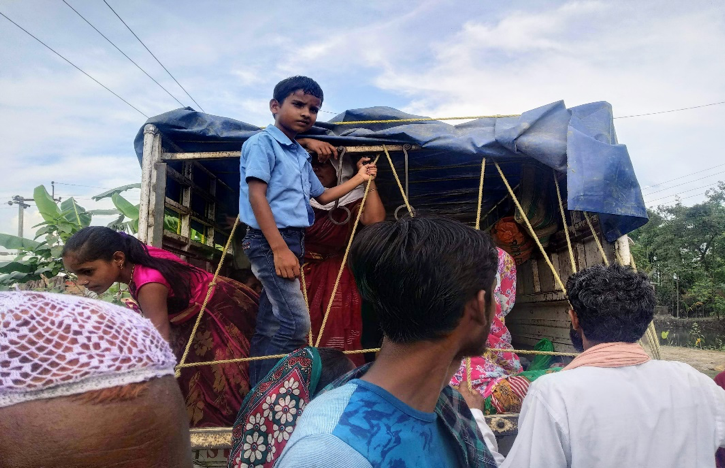In the Name of Indian Citizenship? Criminalizing Statelessness at the India-Bangladesh Border
Posted
Time to read
Guest post by Malini Sur, Western Sydney University. This post is the second instalment of the Border Criminologies Themed Week on Citizenship, Identity and Belongingness: Narratives from India, organised by Rimple Mehta.
The recently published United Nations World Migration Report offers valuable insights into the global scale and extent of displacement and migration. Conflicts, state repression, and severe economic, political, and climatic changes have led to over 71.1 million people becoming refugees, stateless, or internally displaced. The report further notes that out of 272 million international migrants, two-thirds are labour migrants. Close scrutiny of both undocumented migration and everyday border-crossings, especially in regions where international borders divide similar societies, have historically proved the porosity of established migration categories like displaced/refugees and legal/irregular labour migrants.
Nowhere is this leakiness more evident than at the 2545-mile-long India-Bangladesh border. The United Nations report identified this border as one of the 13 major migrant corridors in Asia; it represents the historical accumulation of migratory movements. Indian sources estimate that twenty million Bangladeshis are suspected to have resettled in India without official authorization. In the absence of labor migration policies, India’s security-centric discourse, electoral politics and concerns about land loss link undocumented Bangladeshi migration with threats of “infiltration” and “terrorism.”
In 2007, when I first arrived to conduct fieldwork at the India-Bangladesh border, India had just started constructing a new high-security border wall. The new infrastructure cut through farmlands and divided families. The barrier intended to guard India against unauthorised Bangladeshi migration, terrorism, and smuggling. Aided by shared language, culture, and religion, undocumented Bangladeshis could easily slip into Indian citizenship. While corrupt Indian politicians offered them identity cards in exchange for votes during elections, they did very little to ameliorate the poverty and legal ambiguity that enveloped migrant lives.
The impact of old routes of migration were especially evident in the state of Assam in Northeast India, the first site of my fieldwork. Here, anxieties about land loss and cultural identity were exacerbated by the perception that Bangladeshis had unlawfully made this state their home. India had heavily militarized Assam: I encountered numerous checkpoints within the state before I even neared the India-Bangladesh border.
During my fieldwork from 2007 until 2015, I saw the India-Bangladesh border effortlessly shape-shift from a matrix of wires and metal pillars through which villagers enquired about families and traded news into sites of closure and suffering. Indian border forces shot undocumented border-crossers at sight; in 2019, such shootings claimed 37 lives. Life at the border was defined by tension-ridden negotiations: in response to militarization and state repression, people forged meaningful relationships with one another and even with the troops who manned the border. These affinities cut across the boundary lines of religion—Muslim, Christian, and Hindu.
In a legal stroke of the pen, India has set to unsettle these relationships. On December 11, 2019, the Indian parliament passed the Citizenship Amendment Act. The amendment uses the category of “persecuted minorities” to grant Indian citizenship to Hindus, Sikhs, Buddhists, Jains, Parsis, and Christians who “illegally” migrated to India from the neighbouring Muslim-majority countries of Afghanistan, Bangladesh, and Pakistan before December 2014. The act does not extend citizenship to existing refugees in India, such Rohingya Muslims or Sri Lankan Tamils, either Hindu or Muslim. The passing of this legislation has led to widespread fears that India’s impoverished Muslims would eventually be stripped of their existing Indian citizenship or forced to justify their legitimacy as Indian citizens on a daily basis.
Since 2015, the National Register for Citizens – a massive bureaucratic exercise implemented in the state of Assam - excluded 1.9 million people from Indian citizenship. Of this, a significant number were Hindu Bengalis. This exercise has had enormous human costs, including suicides among those placed in detention centres. Widespread protests against India’s Citizenship Act in Assam have quite correctly foregrounded the fear that Hindu Bengalis now have a legal avenue for claiming Indian citizenship. As the protests make it evident, this act will further aggravate the crisis of land and identity in frontier states like Assam.

The dilemmas of discerning Indian citizens and Bangladesh unauthorised migrants remain. In the two Foreigners Tribunals in Assam where I conducted fieldwork, these were evident. After Assam’s border police identified people as unauthorised Bangladeshis the Tribunals summoned them. Hindus and Muslims, rich and poor poured into the Foreigners Tribunals showing documents to prove their Indian citizenship.
During the judicial proceedings, state prosecutors and defence lawyers battled over Indian citizenship and Bangladeshi migrant illegality. Some suspected to be unauthorised Bangladeshis asserted that the police had neither interrogated them nor visited their houses. Others held that jealous neighbours and family members had unjustly framed them to make claims to land and property inheritance. Even when an individual was found to be an Indian citizen, their neighbours continued to suspect their credentials.
India’s new Citizenship Act holds serious implications for statelessness at the India-Bangladesh border. For several decades enclave dwellers were rendered stateless due to their ambiguous territorial and political locations. The implications of this act are already evident in state repression of widespread and sustained protests. This act, along with the proposed National Population Register will unleash a regime of documentary terror and welfare discrimination in a country where birth registration and other documentary practices are extremely low, especially among the migrant poor. It will ensure that those who have not been born stateless, will likely become stateless in India.
Legislation that discriminates on the grounds of religion impairs neighbourly relationships. Bangladesh has already cancelled official delegations to India in the light of these recent political developments, and has refused to accept what it designates as “Indian Muslim minorities”—who, they anticipate, Indian border troops will try to physically push across the border into Bangladesh.
In 2008, Bangladesh granted national citizenship and voting rights to 300,000 Urdu speakers who had until then been excluded from citizenship. Bangladesh still accommodates 906,000 stateless people—the highest number of stateless people globally. This is largely on account on the exodus of the Rohingyas from Myanmar’s Rakhine state due to ethnic cleansing and genocide. Myanmar’s 1982 Citizenship Law that offers a pathway to citizenship for members of 135 ethnic races, excludes the Rohingya.
India is likely to join Myanmar in making national citizenship a discriminatory practice. And this is entirely self-created.
Any comments about this post? Get in touch with us! Send us an email, or post a comment here or on Facebook. You can also tweet us.
__________
How to cite this blog post (Harvard style)
Sur, M. (2020). In the Name of Indian Citizenship? Criminalizing Statelessness at the India-Bangladesh Border. Available at: https://www.law.ox.ac.uk/research-subject-groups/centre-criminology/centreborder-criminologies/blog/2020/02/name-indian (Accessed [date])
Share
With the support of







